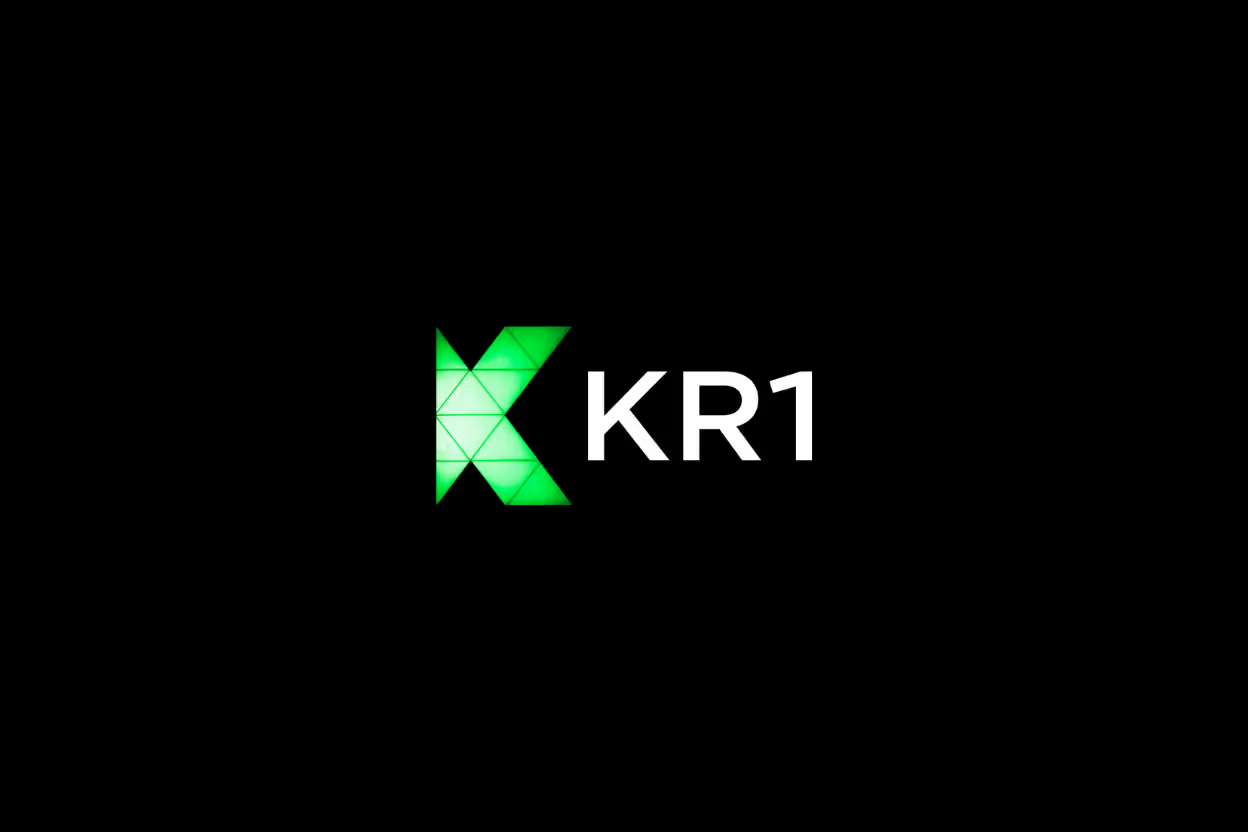The phrase "Every Company Will Be a Crypto Company" reflects a shift already underway in technology adoption. As blockchain technology becomes more accessible, companies across industries are starting to integrate crypto elements into their operations. Founders and investors alike will need to understand how this impacts business models, funding, and growth strategies.
This shift isn’t just about adding a crypto label—it changes how value is exchanged and recorded. Will traditional companies resist the change, or adapt quickly? What roles will founders and venture capitalists play as crypto features become part of standard business? This post unpacks those questions, outlining what to expect in 2025 and beyond.
Why Crypto Infrastructure Is Becoming Universal
As blockchain technology moves beyond niche use, it’s becoming a core part of how companies operate. Crypto infrastructure is no longer just for direct payments or speculative trading; it is expanding into a foundation for many business functions. This shift means companies are embedding crypto elements deeply into their products, services, and operations, often in surprising ways. Let’s explore two key reasons why this change is happening.
Emerging Use Cases Beyond Payments
Most people first associate crypto with payments, but companies are pushing far beyond that basic function. Some are exploring NFTs to create new types of digital ownership or community engagement. NFTs can represent anything from digital art to exclusive memberships or event tickets, opening new marketing and revenue channels.
On-chain loyalty programs are gaining attention as well. Instead of traditional points systems, companies use tokens on a blockchain to reward customers. These tokens can be traded, redeemed, or given value outside the usual confines. This adds flexibility and trust, as customers can verify rewards independently.
Tokenized assets are another rising trend. Businesses are turning physical or intangible assets into tokens—fractional ownership of real estate, company shares, or even intellectual property. This opens opportunities for greater liquidity, new investment models, and easier transfer of ownership.
These emerging use cases show why crypto infrastructure must be flexible and accessible. Companies want to do more than accept crypto payments; they want to build new customer experiences and financial models on blockchain.
Enterprise-Grade Blockchains and Security
When companies adopt blockchain, their top priorities are security, transparency, and compliance. Enterprises need blockchains that handle large volumes with low risk. Public blockchains have given way in many cases to permissioned or hybrid models that offer:
- Strong identity and access controls
- Auditable transaction histories
- Automated compliance checks through smart contracts
Security breaches or data manipulation can destroy trust quickly, so companies choose blockchains that protect their business and customer data rigorously. This is why blockchain platforms designed for enterprise use, with high uptime and support for governance, are becoming standard.
Transparency matters beyond compliance. It builds trust with stakeholders by allowing independent audits and verifiable transactions. This level of accountability is appealing across industries from finance to supply chain management.
Understanding these factors helps explain why crypto infrastructure is not a niche choice but a universal one. Businesses are looking for tools that make crypto-safe, reliable, and adaptable—not just experimental.
Together, these trends indicate a future where nearly every company will rely on some form of crypto infrastructure, not just for payments but for core business functions. The question is not if companies will use blockchain, but how deeply they will embed it into their operations.
How Crypto Touches Every Sector
Crypto's influence stretches far beyond the usual headlines about Bitcoin or trading platforms. It’s reshaping industries in real time, embedding itself into daily operations and creating new value for businesses and their customers. From shaking up traditional finance to transforming gaming and retail, crypto is becoming a fundamental layer in many fields. Let’s explore how this happens across both financial and non-financial sectors.
Finance and Banking Transformation
Crypto’s impact on finance is no longer hypothetical. It’s changing how money moves, how investments happen, and how assets are held. Consider the following examples that illustrate this transformation:
- Payments: Major companies now accept crypto for payments, speeding up transactions and cutting fees. For example, PayPal and Visa have integrated crypto payments into their systems, enabling users to pay with digital currencies anywhere Visa cards are accepted.
- DeFi Integration: Decentralized finance (DeFi) removes intermediaries by automating lending, borrowing, and trading through smart contracts. Traditional finance firms are exploring partnerships with DeFi platforms to offer customers new financial products with lower costs and faster execution.
- Custodial Services: Firms like Coinbase and Fidelity provide secure crypto custody solutions, appealing to both retail and institutional investors needing safe storage for their digital assets.
- Cross-Border Settlements: Banks and remittance services use blockchain to streamline international payments. Ripple, for example, offers real-time cross-border settlement solutions, reducing delays and lowering transaction costs compared to legacy systems.
This financial shakeup raises clear questions: How will traditional banks adapt? Will crypto-first firms replace old players? One thing is certain—crypto’s influence on finance will continue to deepen.
Non-Financial Sectors: Gaming, Retail, Supply Chain, and Media
Crypto doesn't stop at finance. Industries like gaming, retail, supply chain, and media use blockchain in distinct and creative ways that improve user experience and operational transparency.
- Gaming and NFTs: Non-fungible tokens (NFTs) have unlocked new ways for gamers to own, trade, and monetize in-game assets. Titles like Axie Infinity demonstrate how players can build real-world value through gameplay. NFTs also create exclusive communities around games and collectibles.
- Supply Chain Management: Blockchain enables detailed tracking and verification of products, increasing transparency and reducing fraud. Companies use it to verify the origin of goods, improve recalls, and ensure compliance. Walmart and Maersk are pioneers applying blockchain to track food safety and shipping containers.
- Retail Loyalty Programs: Some retail brands use blockchain-based loyalty tokens instead of traditional points. These tokens can be redeemed across multiple platforms, sold, or gifted without centralized control. This adds real value and flexibility to loyalty rewards.
- Media and Fan Engagement: Tokenized fan experiences allow creators to issue exclusive access, merchandise, or voting rights through tokens. This model builds closer connections between artists and audiences while opening new revenue streams.
In each sector, crypto isn’t just a feature added on top—it redefines business processes and customer interactions. It invites you to rethink what ownership, trust, and value mean in a connected world.
Are you ready to see your company as part of this crypto-driven future? The shifts happening now hint that adoption won’t just be optional—it will become the norm.
The Changing Role of Founders, Product Teams, and VCs
As crypto technology reshapes industries, the roles of founders, product teams, and venture capitalists are shifting significantly. This change goes beyond adopting new tools; it calls for a fresh mindset focused on openness, decentralization, and user empowerment. Founders must rethink how products deliver value, product teams need to embed crypto principles deeply, and investors sharpen their criteria to back projects that fit the evolving landscape. Let’s explore these shifts more closely.
Aligning Product with Crypto Values
Building crypto products means designing with a new set of priorities. The core values of crypto—openness, decentralization, user control—are no longer optional add-ons but fundamental. How can teams translate these abstract principles into concrete product decisions?
- Openness: Transparent protocols and open-source code invite community collaboration. This creates trust and allows others to build on or audit the work.
- Decentralization: Products should avoid central points of failure or control. Distributed governance models, like DAOs, and peer-to-peer networks increase resilience and fairness.
- User Control: Users gain control over their data and assets through wallets and private keys, instead of relying on intermediaries. Interfaces must make these controls intuitive and secure.
Developers face the challenge of balancing security and usability while maintaining these values. Products need to empower users with true ownership without overwhelming them. In practice, this can mean smart contracts that automate agreements transparently or token models that align incentives between users and creators. Product teams become advocates for user sovereignty, not just feature builders.
Investor Focus: Which Startups Attract Funding?
Venture capitalists are changing how they evaluate startups in the crypto space. The old playbook, focused solely on growth metrics or user numbers, no longer paints the full picture. Today, VCs look at:
- Crypto-Native Business Models: Is the startup truly built for crypto, or is it retrofitting traditional models? Investors favor projects leveraging blockchain to solve unique problems or reshape markets.
- Market Traction with Community Engagement: Beyond raw user counts, active and committed communities signal product-market fit in crypto. Token holders, governance participants, and developers contribute to ecosystem strength.
- Compliance and Risk Management: Regulations are still evolving, but startups demonstrating a clear compliance strategy earn investor trust. Transparency in token economics and adherence to legal frameworks reduce future roadblocks.
Standing out requires more than just having a blockchain label. Founders who can articulate how their model benefits from crypto’s characteristics—such as trustlessness or decentralization—grab attention. VCs want to back startups that have the potential to scale while navigating the unique challenges of this environment.
As the crypto scene matures, these factors define who attracts funding and who struggles. Founders and teams must adapt to meet these criteria, emphasizing authentic crypto alignment and smart growth plans.
This evolving dynamic shows that founders, product teams, and investors have to work differently than before. Success depends on understanding crypto’s values and the new rules driving funding and product design. They must build with the future in mind if their companies are going to be part of the next wave of crypto integration.
Risks, Roadblocks, and Common Misconceptions
As the crypto ecosystem integrates with traditional business, companies face clear challenges. Understanding the risks and obstacles ahead is essential for founders and investors. The promise of blockchain doesn’t eliminate uncertainty or danger. Instead, it requires careful planning and smart decision-making to avoid costly mistakes. This section breaks down two key concerns: how to handle shifting rules set by governments and how to protect assets from the natural volatility and technical vulnerabilities in crypto.
Navigating Regulatory Uncertainty
Around the world, governments wrestle with how to manage crypto’s rise. This creates a patchwork of rules companies must follow, which can feel like moving targets. In the US, regulators like the SEC and CFTC are sharpening their focus on crypto projects, looking closely at securities laws and consumer protection. The EU has adopted measures such as the Markets in Crypto Assets (MiCA) regulation, aiming for clearer guidelines across member states. Asia’s approach varies—Japan and Singapore favor regulated frameworks that support innovation, while China remains restrictive with bans on crypto trading.
This uneven regulatory landscape means companies must:
- Monitor rule changes constantly and stay ahead of compliance deadlines
- Build compliance teams with deep crypto expertise combined with legal know-how
- Implement transparent KYC (Know Your Customer) and AML (Anti-Money Laundering) processes
- Prepare for audits and reporting obligations specific to their jurisdiction
Ignoring or misunderstanding these complexities can lead to fines, delays, or licensing issues. For firms expanding internationally, balancing these different standards becomes a strategic priority. Are you confident your compliance approach can handle global shifts? Staying proactive and flexible gives companies room to adapt without interrupting business.
Managing Risk: Volatility and Security
Crypto’s notorious price swings and technical vulnerabilities make risk management a central challenge. How do companies keep operations steady when values can double or fall by half within weeks? Many build financial strategies that include:
- Hedging with derivatives or stablecoins to insulate budgets from volatility
- Keeping core reserves in fiat currency while using crypto only for transactional purposes
- Transparent accounting using blockchain tools to track real-time asset values
Besides price risk, security remains a top concern. Holding digital assets demands strong custody solutions—vaults where private keys are safeguarded from theft or loss. Companies often turn to trusted custodians with insurance and multi-signature wallets that require multiple approvals for transfers.
Smart contract vulnerabilities add another layer of risk. Flaws in code can expose companies to hacks or unintended behavior. The best practice includes:
- Conducting thorough audits by reputable firms
- Using formal verification methods to validate contract logic
- Implementing upgrade mechanisms and emergency stops in contracts
Risk isn’t eliminated, but managed thoughtfully. Being prepared with clear processes around volatility and security reduces surprises and builds confidence for both internal teams and investors.
Understanding these risks and planning effectively positions companies to benefit from crypto’s advantages without falling victim to common pitfalls. This awareness separates firms ready to lead from those left scrambling as the industry evolves.
Conclusion
The shift toward every company becoming a crypto company is no longer a question of if but how soon. Crypto technology is quickly moving from an add-on to a core business feature, reshaping payments, ownership, and trust in ways that touch all sectors.
Founders and investors must prepare by embracing crypto's principles of transparency, security, and user control while adjusting to changing regulations and managing volatility. Start building products and business models that align authentically with these values.
Future success will go to those who integrate crypto deeply, not just superficially. What steps can you take today to position your company in this emerging reality? The time to act is now.









